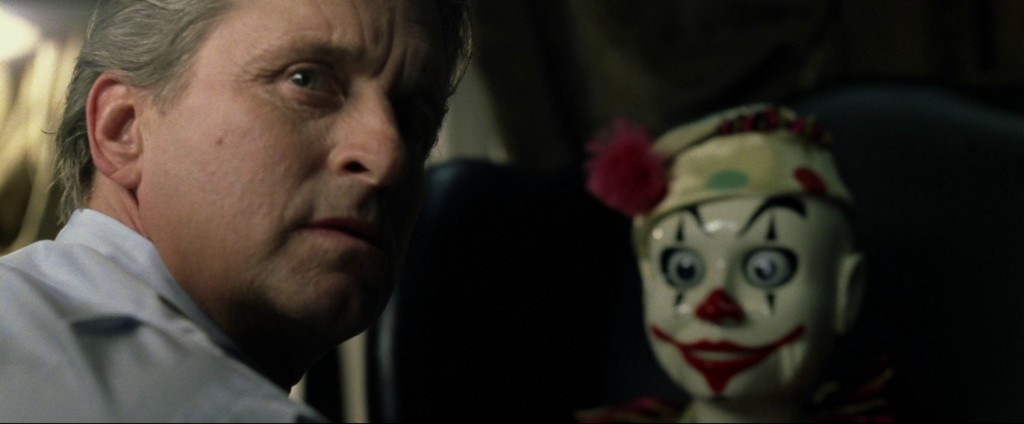
David Fincher’s second film The Game (1997) works better as an investigation of the psychological effects of what is essentially a mid-life crisis than it does as a thriller. The most consistent and standout feature of the film is the cinematography of Harris Savides. The dark shadows and heavily saturated colors lend Savides’ photography a sensual component that matches the tone of the piece though not necessarily every scene that makes up the whole.
The Game follows Nicholas Van Orton (Michael Douglas), an incredibly wealthy and powerful investment banker, on his forty-eighth birthday. Conrad (Sean Penn), his estranged brother, bestows Nicholas a gift certificate to play an elaborate game that takes hold of your reality, guaranteeing the adventure of a lifetime. Almost immediately events unfold that push Nicholas on his merry way, trying to uncover a conspiracy theory in which the game is a means by which one is robbed and discredited, then finally discarded. Christine (Deborah Kara Unger) becomes Nicholas’ on again, off again sidekick, helping him at one turn to escape the game only to reveal that she is one of the key players.
I said before that The Game is more interesting as a psychological investigation because it just isn’t convincing as a thriller. So I would assume that because it so quickly fails to thrill that it is a much deeper film simply packaged as a genre movie. From the word “go” it was apparent that the game going wrong was the game manufactured for Nicholas to play. Every twist and turn reinforced my assumption, and quickly took off what very little edge this movie had to begin with. By the last half hour of the film, circumstances within the narrative had become so preposterous that what little I had invested in the film vanished. This, of course, made it impossible for me to engage in the “twist” ending(s) of the film.
The concept for a thriller deriving from the protagonist acting as just a pawn in an elaborate and sinister game is one of the tried and true staples of the genre. Classics that follow this archetype vary from John Frankenheimer’s Seconds (1966) to Roman Polanski’s Frantic (1988), Alfred Hitchcock’s Vertigo(1958) to Wim Wenders’ The American Friend (1976). Each of these films carries a variation on this theme and each reinvents the archetype with depth and expansive characterizations. What is so compelling about Wenders’ The American Friend, for instance, is the close friendship Zimmerman (Bruno Ganz) forms with Ripley (Dennis Hopper), the man who is manipulating him, forcing him to play his game. It’s these kinds of innovations that keep the archetype alive and the genre flourishing. Looking again to Fincher’s film, it appears to be nothing but the archetype dressed rather nicely, without any dimension.
Nicholas’ flashbacks to his father’s suicide and the wooden clown doll with the key in its mouth seem to elude to a childhood perverted by the intrusion of death and disillusionment. Constantly, Nicholas is drawing comparisons between himself and his father, a device implemented by Fincher to reinforce the audience’s assumption that these comparisons are the catalyst for Nicholas’ crisis. That said, employing the archetype discussed above as a way of articulating and discussing this crisis seems like cheap dressing and allegory. The routine nature of employing such an archetype prevents the audience from making any meaningful investment in the picture, which only negates the archetype as a form of filmic allegory.
So what are we then left with? A film that does not satisfy either side of its purpose. Despite the visual integrity and beauty of The Game, it is neither memorable nor enjoyable, except for some of Michael Douglas’ outlandish one-liners.
